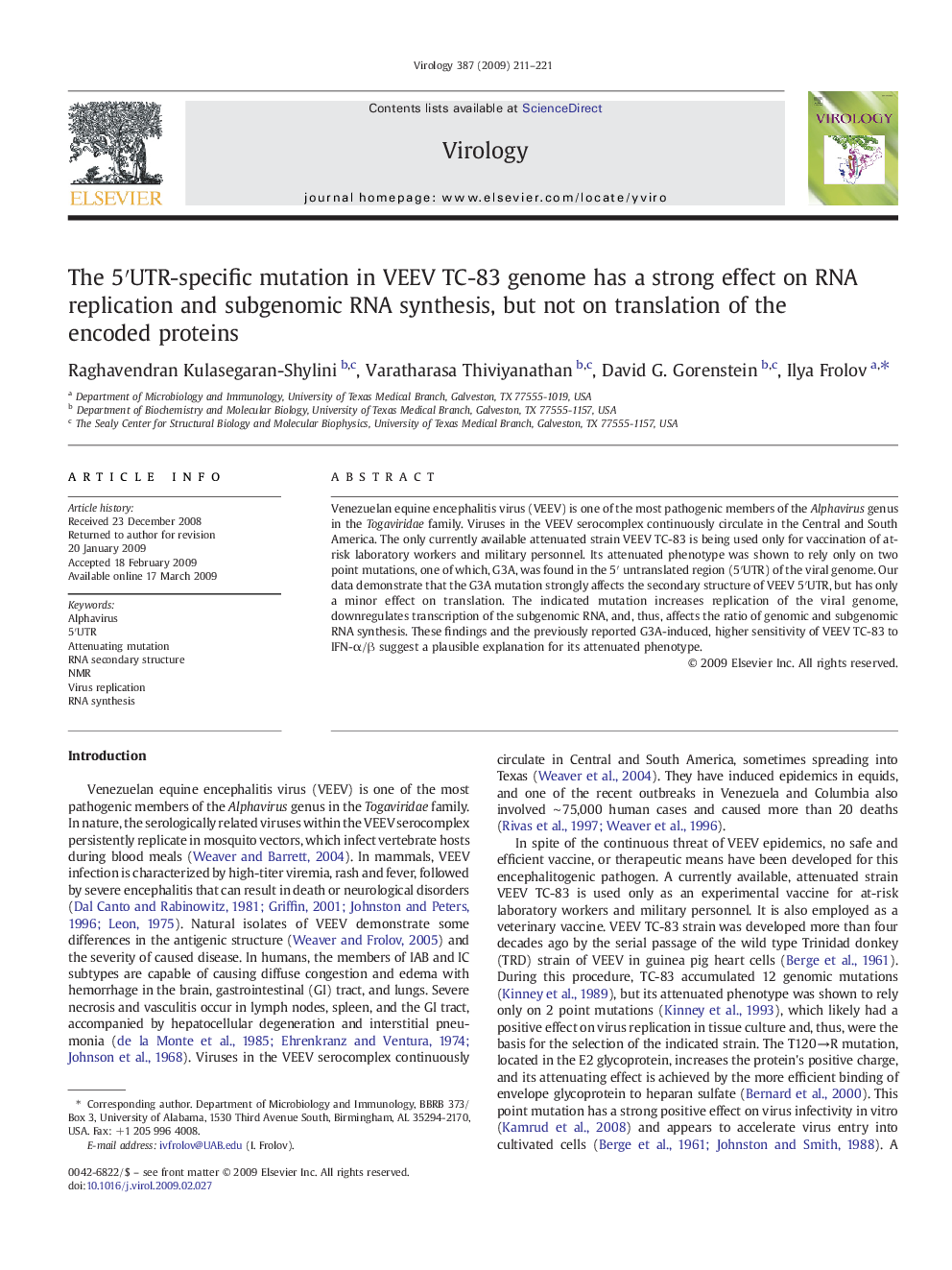| کد مقاله | کد نشریه | سال انتشار | مقاله انگلیسی | نسخه تمام متن |
|---|---|---|---|---|
| 3425467 | 1227285 | 2009 | 11 صفحه PDF | دانلود رایگان |

Venezuelan equine encephalitis virus (VEEV) is one of the most pathogenic members of the Alphavirus genus in the Togaviridae family. Viruses in the VEEV serocomplex continuously circulate in the Central and South America. The only currently available attenuated strain VEEV TC-83 is being used only for vaccination of at-risk laboratory workers and military personnel. Its attenuated phenotype was shown to rely only on two point mutations, one of which, G3A, was found in the 5′ untranslated region (5′UTR) of the viral genome. Our data demonstrate that the G3A mutation strongly affects the secondary structure of VEEV 5′UTR, but has only a minor effect on translation. The indicated mutation increases replication of the viral genome, downregulates transcription of the subgenomic RNA, and, thus, affects the ratio of genomic and subgenomic RNA synthesis. These findings and the previously reported G3A-induced, higher sensitivity of VEEV TC-83 to IFN-α/β suggest a plausible explanation for its attenuated phenotype.
Journal: Virology - Volume 387, Issue 1, 25 April 2009, Pages 211–221